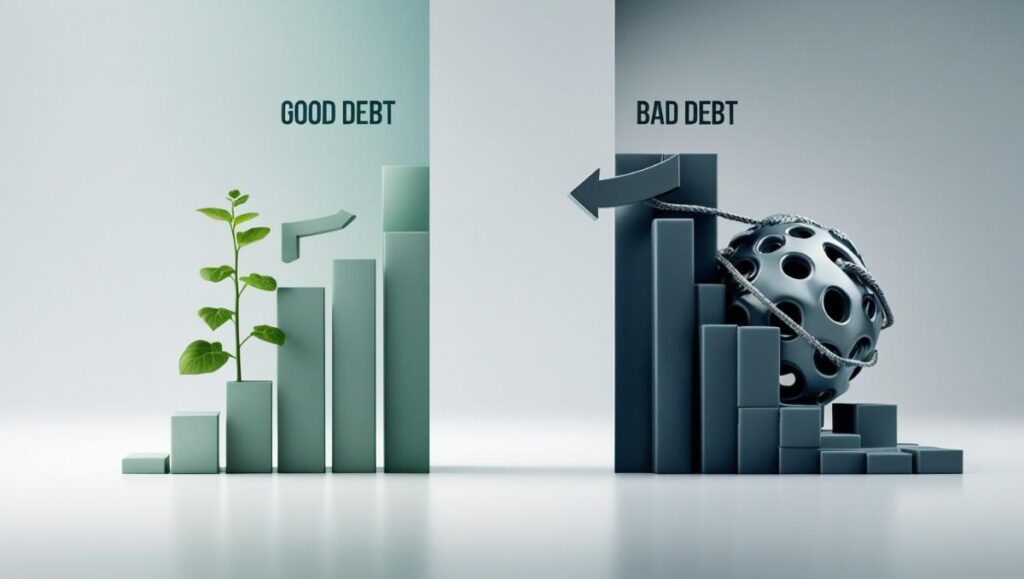
Debt—it’s a word that carries a heavy weight in many people’s lives. For some, it’s a source of stress and sleepless nights. For others, it’s a strategic tool used to build wealth or seize opportunities. The truth lies somewhere in between. Contrary to popular belief, debt isn’t always the enemy. Like most financial tools, it depends on how you use it. Used wisely, debt can open doors to education, home ownership, and business opportunities. Used recklessly, it can close those same doors with crushing interest rates and unmanageable monthly payments.
So, how do you strike the balance? How do you live your life without letting debt control you? That’s exactly what this guide is about—empowering you with practical, human-friendly insights on debt management. Whether you’re trying to climb out of a mountain of bills or just want to optimize your financial strategy, this article offers a roadmap you can realistically follow.
Understanding Debt: Not All of It Is Bad
Before diving into tactics and tools, it’s essential to challenge a common mindset: the belief that all debt is bad. This black-and-white view of debt can be harmful, pushing people toward unnecessary guilt and fear. In reality, debt comes in many forms—some constructive, others detrimental.
Think about it this way: would you rather rent an apartment for the next 30 years or pay a mortgage that lets you build equity and eventually own your home? The mortgage involves debt, yes, but it also adds long-term value to your life.
On the other hand, swiping a high-interest credit card to buy a new designer outfit or fund a weekend getaway doesn’t create any lasting financial benefit. That type of spending results in what we call “bad debt”—the kind that silently chips away at your financial health.
To master debt, you first need to understand the different categories it falls into. Let’s break it down.
Good Debt vs. Bad Debt: What’s the Difference?

Knowing the difference between good and bad debt is like having a compass in a financial wilderness. It helps you make smarter choices and avoid pitfalls that could derail your goals.
Good Debt: An Investment in Your Future
Good debt serves a purpose. It’s often used to acquire something that has the potential to grow in value or increase your earning power. This kind of debt is more of a stepping stone than a burden. Let’s look at a few examples:
- Student Loans: Higher education is expensive, but it’s also one of the most powerful ways to increase your lifetime earnings. A degree can open doors to careers that would otherwise be out of reach. While student loans must be managed wisely, they often represent a smart investment in your future.
- Business Loans: Starting your own business can be life-changing. Sure, there’s risk involved—but with risk comes opportunity. A business loan used to launch a scalable idea or expand an existing venture can yield significant returns down the line.
- Home Mortgages: Buying a home usually means taking on a mortgage, but unlike rent, your payments build equity. Real estate also tends to appreciate over time, making it a stable long-term investment.
In short, good debt helps you grow. It’s like borrowing from your future self to build a better life.
Bad Debt: The Hidden Trap
Bad debt, in contrast, doesn’t offer long-term benefits. It often involves high interest rates and is used to buy things that quickly lose value. Worse, it can lead to a cycle of borrowing and repaying that becomes harder to break over time.
Common examples include:
- Credit Card Debt: Using credit cards for non-essential purchases—like clothes, gadgets, or takeout—can lead to sky-high balances due to compounding interest. A $500 shopping spree could end up costing $700 or more if not paid off promptly.
- Car Loans: While a car may be necessary, it’s a depreciating asset. The moment you drive it off the lot, its value drops significantly. Long-term car loans with high interest can lock you into a payment plan that doesn’t match the car’s actual worth.
- Personal Loans for Lifestyle Choices: Using personal loans to fund vacations, weddings, or entertainment may offer short-term pleasure, but they often come with long-term regret—especially when repayment becomes a burden.
The bottom line? If the debt doesn’t contribute to your financial growth or long-term stability, it’s likely not worth taking on.
Building Your Debt Management Plan: Where to Begin

If you’re feeling overwhelmed by the weight of your debts, the worst thing you can do is ignore them. Avoidance only allows interest and penalties to pile up. Instead, take charge with a debt management plan—a structured, realistic roadmap that helps you regain control over your money.
Here’s how you can get started:
Step 1: Assess Your Financial Landscape
Before making any decisions, you need a clear picture of your finances. That means understanding:
- How much do you owe in total?
- Who do you owe it to?
- What are the interest rates and due dates?
Start by creating a debt inventory—a list of every loan, credit card, or financial obligation you have. Use a spreadsheet, a budgeting app, or even pen and paper if that works better for you.
This exercise might be uncomfortable, especially if you’ve been avoiding the reality of your debt. But knowledge is power, and this step lays the foundation for the rest of your plan.
Step 2: Create a Realistic Budget
A good budget isn’t about restrictions—it’s about clarity and intention. Begin by tracking your income and expenses for a full month. Be honest and detailed. Include everything from rent and groceries to coffee runs and streaming subscriptions.
Once you know where your money is going, identify areas where you can cut back. Ask yourself:
- Are there non-essential expenses I can temporarily eliminate?
- Can I downgrade or pause any subscriptions?
- How much can I realistically set aside for debt repayment each month?
Even small savings—like reducing takeout meals or switching to a cheaper phone plan—can add up to big changes over time.
Step 3: Prioritize High-Interest Debt First
Not all debts weigh equally. Focus on paying off high-interest debts first, such as credit cards or payday loans. These are the debts that grow the fastest and can cripple your financial flexibility if ignored.
Here are two common strategies to consider:
- The Avalanche Method: Pay off debts with the highest interest rate first while making minimum payments on the rest. This saves you more money in the long run.
- The Snowball Method: Pay off the smallest debts first to build momentum and confidence. This strategy is more psychological but can be effective if motivation is your biggest hurdle.
Choose the method that fits your personality and lifestyle. The key is consistency.
Step 4: Consider Debt Consolidation or Negotiation
Sometimes, restructuring your debt can make it more manageable. Consolidation loans combine multiple debts into a single monthly payment—usually at a lower interest rate. This simplifies your finances and can reduce overall interest paid.
Alternatively, reach out to your creditors. Many lenders are willing to negotiate new terms if you’re struggling. You may be able to extend payment deadlines, reduce your interest rate, or even settle for a lower payoff amount.
Remember: asking for help isn’t a sign of failure—it’s a smart financial move.
Let’s say you owe $1,000 on a credit card. By joining a money circle with a planned payout, you can receive the funds you need to pay off the card in full—then continue contributing without accumulating more interest.
It’s a simple, collaborative approach to managing money that makes the repayment process feel less isolating and more empowering.
Psychological Side of Debt: Mindset Matters
Financial health isn’t just about math—it’s also about mindset. Debt can be emotionally exhausting. It creates anxiety, shame, and sometimes even depression. That’s why managing your relationship with debt is just as important as managing the numbers.
Here are a few tips to protect your mental well-being while paying off debt:
- Celebrate Small Wins: Every payment you make is a step forward. Acknowledge your progress.
- Set Realistic Goals: Don’t try to eliminate all debt overnight. Aim for manageable milestones.
- Avoid Comparison: Everyone’s financial journey is different. Focus on your own path.
- Practice Self-Compassion: You’re not “bad” for having debt. Life happens. What matters is that you’re taking steps to fix it.
Final Thoughts: Your Journey Starts Now
Debt doesn’t define you. It’s a financial situation—one that can be changed with awareness, discipline, and a strategic plan. By understanding the difference between good and bad debt, prioritizing your repayments, you can transform your finances and your future.
Remember: the goal isn’t just to get out of debt. It’s to build a life of financial freedom, where your money works for you—not against you.
Your journey starts today. One payment, one decision, one step at a time.

